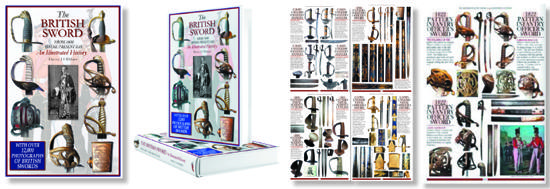
THE 1805 PATTERN NAVAL OFFICER’S SWORD is probably the most common sword type associated with British naval officers during the Napoleonic Wars. No official order has been found detailing the introduction and design of this sword but it is generally agreed that mention of a regulation British naval officer’s sword was made in an Admiralty Minute dated 4th August 1805.
“A sword of each pattern to be sent to the Port Admirals at Plymouth, Portsmouth and Sheerness with a letter signifying the directions of my Lords Commissioners of the Admiralty that they be considered as the uniform swords to be worn in future by Officers of His Majesty’s Navy – the ornamented sword by Admirals, Captains and Commanders and the plain sword by Lieutenants and Midshipmen”.
It is likely that this style of naval sword was already being worn by officers before 1805 as stirrup-hilted swords, both in the Army and Navy, were very popular. The noted German sword importer, J. J. Runkel is known to have supplied sword blades to both branches and British naval officers would have carried swords of similar style before the type became an official pattern. The major change in design appears to be the move from a plain, cushion pommel, to one that features a lionshead. Swords worn by naval commanders and ranks above had an ivory grip with black fishskin normally reserved for lieutenants.
Blades for senior officers were also heavily decorated in blue and gilt designs, including naval trophies, masts, anchors and flags. The pattern tends to have a regulation straight, cut and thrust blade with a broad fuller, very much like the version carried by infantry officers. This is the type most commonly seen, although there appears to have been a tradition with naval officers to also carry broadsword blades. They were probably old family blades simply attached to the new 1805 Pattern hilt.
Hilts were of gilt brass with a langet encompassing an engraved or embossed fouled anchor. The pommel was probably the most distinctive feature of this new sword and took as it inspiration the contemporary lionshead hilts found on British Army cavalry and infantry swords. Scabbards followed traditional forms and consisted of a black leather sheath with gilt brass mounts and loose hanging rings. Occasionally, the locket is decorated with naval motifs but this is rare and most are plain or simply engraved.
© Harvey Withers Military Publishing, 2024

